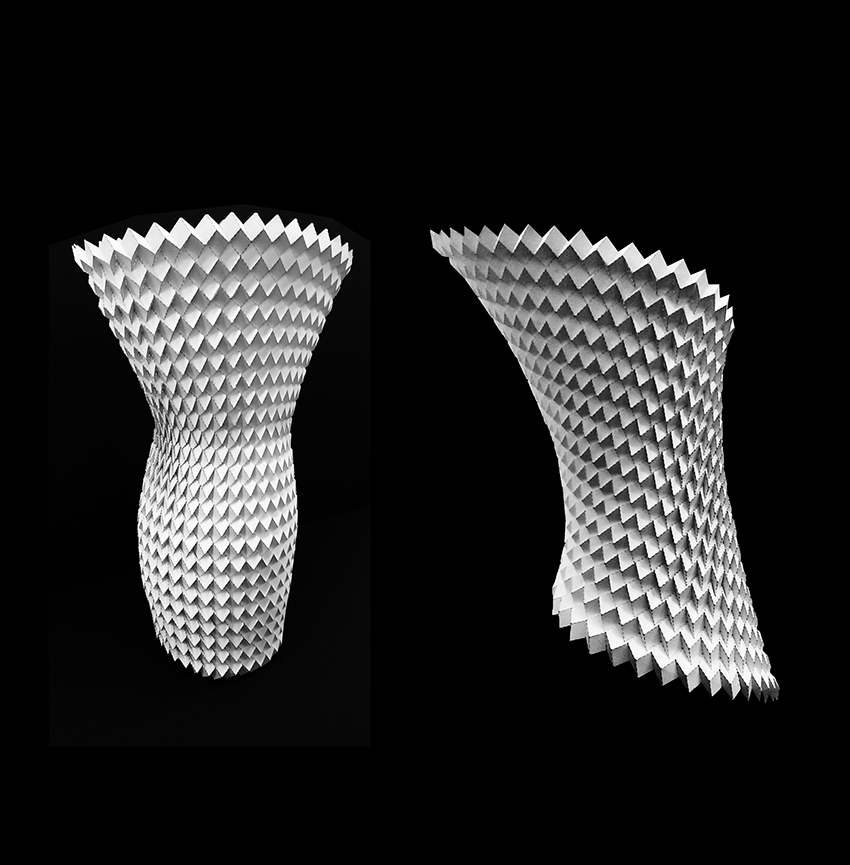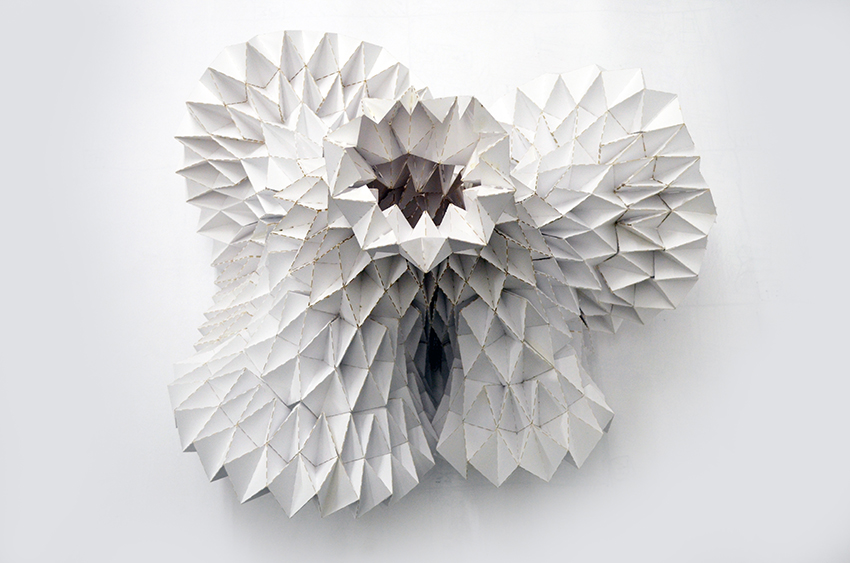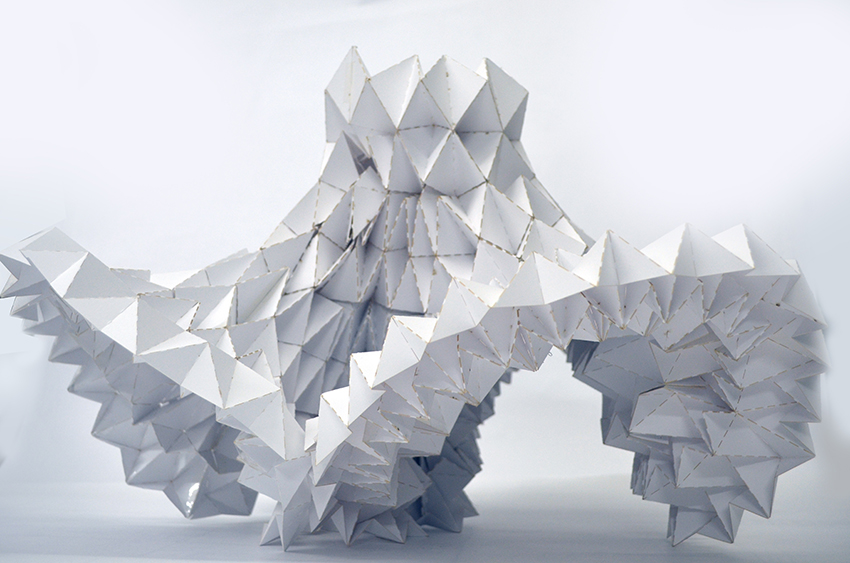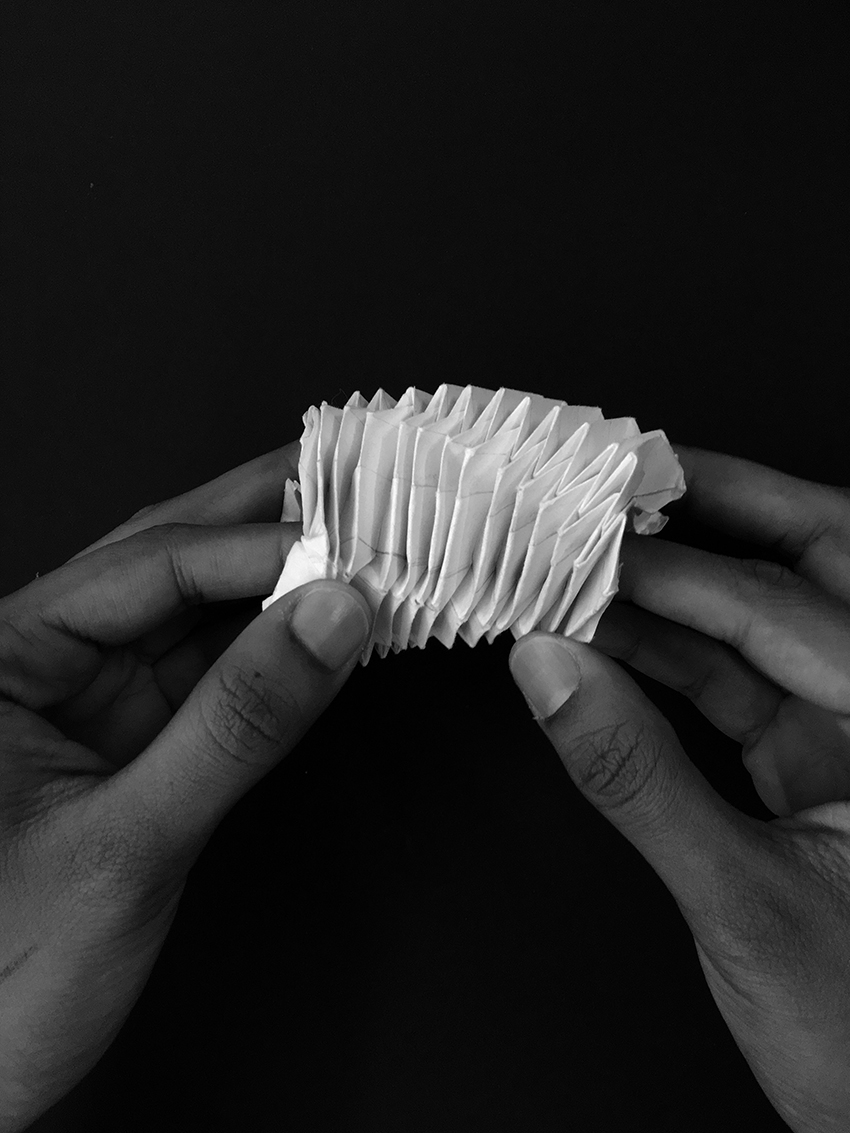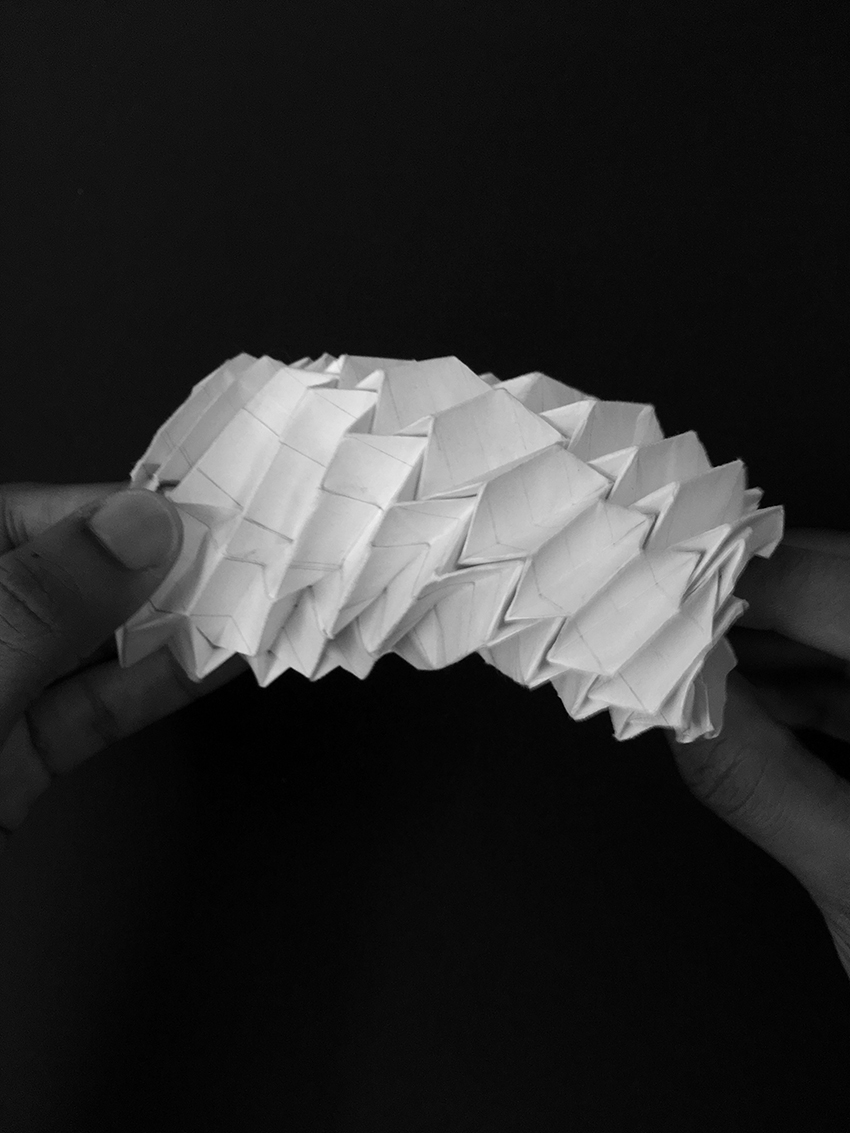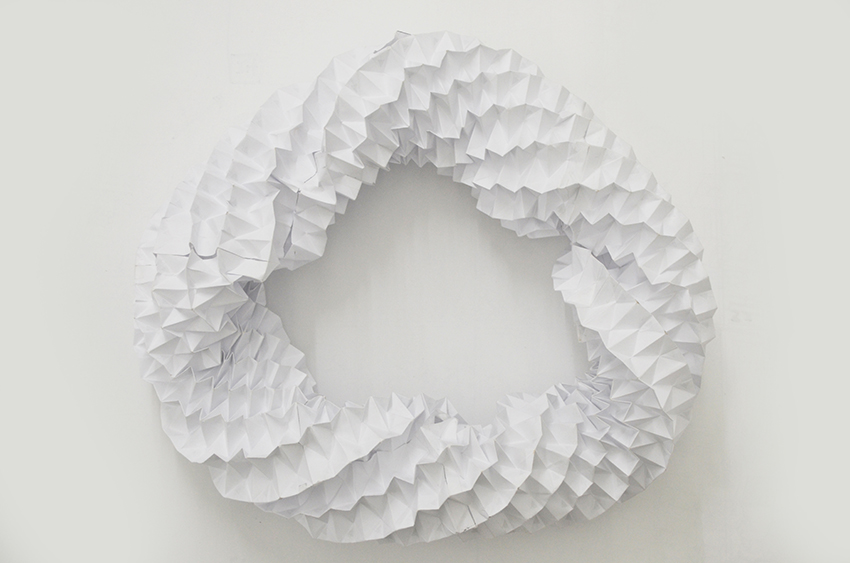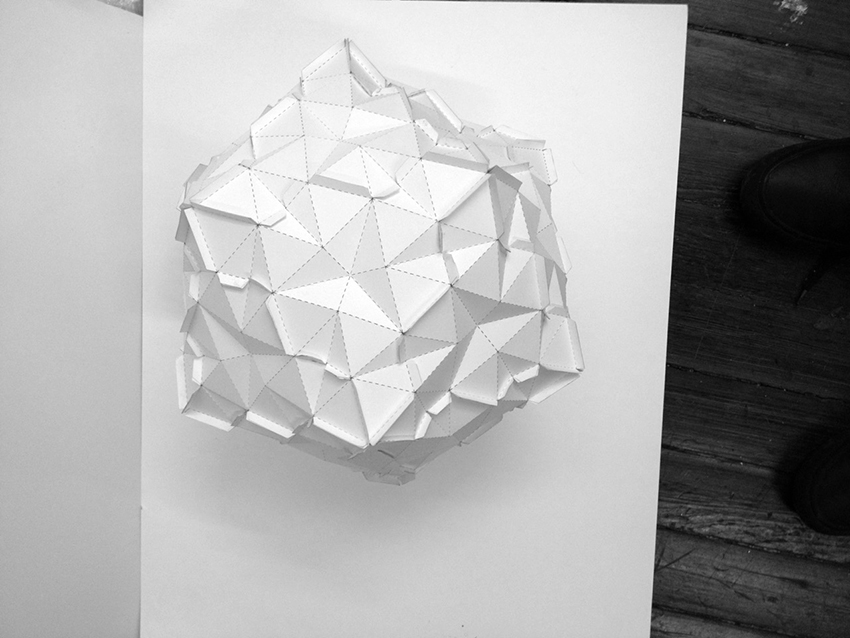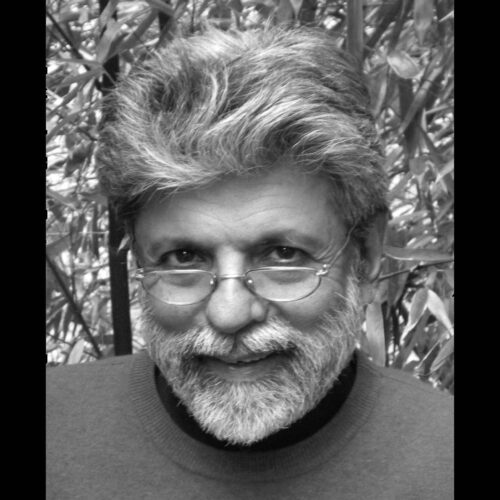MORPHOLOGY STUDIOS 2014-2015
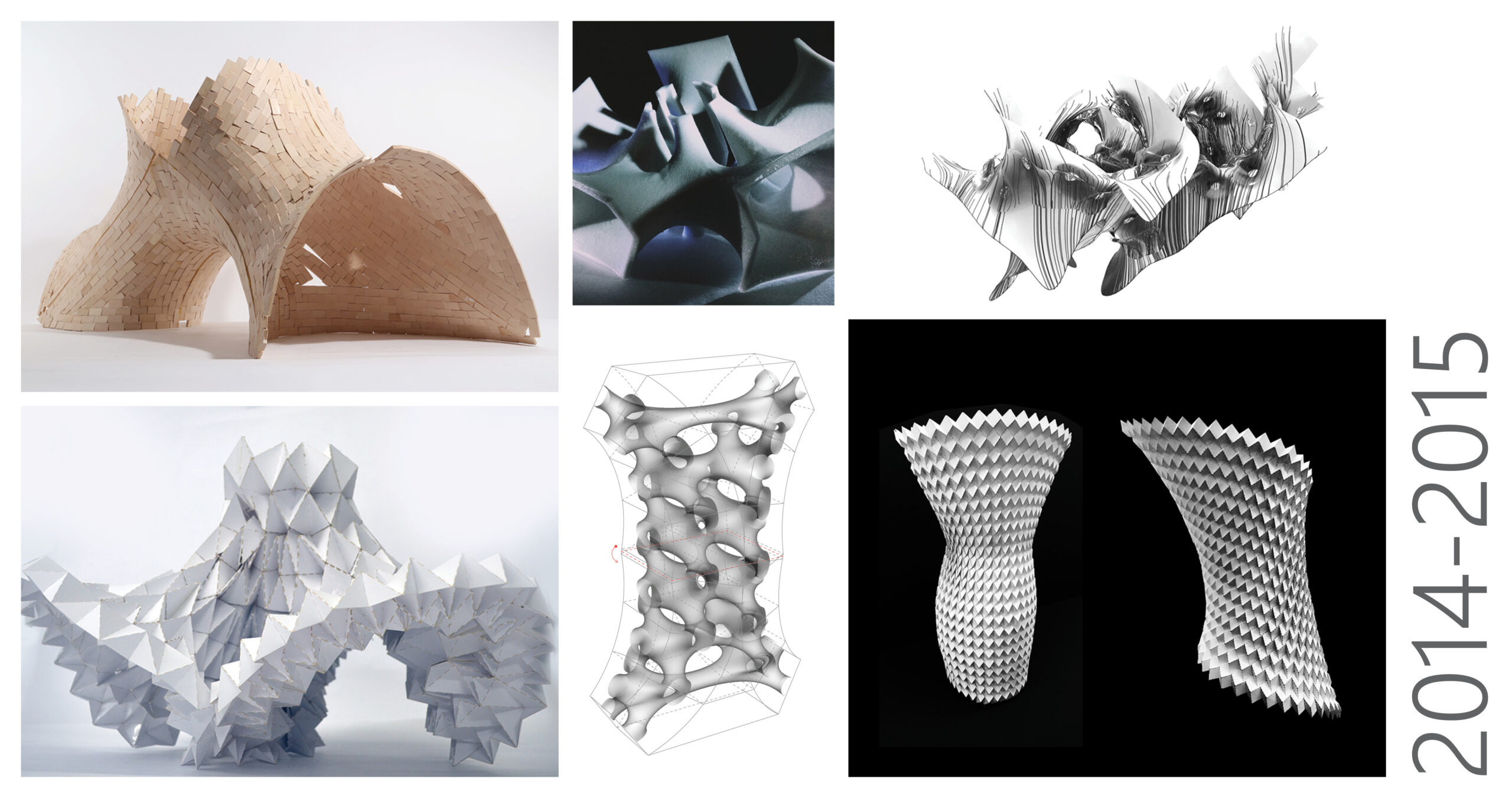
Faculty: Ajmal Aqtash, Patrick Donbeck, John Gulliford, Haresh Lalvani.
The morphology program continues open-ended experiments in form, structure and digital production.
Experiments in folded surfaces re-visit “origami” surfaces to discover variants or less familiar topologies. Undulating tubular forms, hyperbolic undulations, simple toroids and twisted variants or spherical versions, are examples. Manipulation of fold curvature is achieved manually in most instances, with the eventual goal of automating the folding process through software to develop responsive surfaces in physical materials.
In another experiment, the conventional brick was used to derive negatively curved units (saddles) as parts of continuously curved minimal surfaces. We were able to achieve this progressively, with the use of a CNC milled mold, starting with simpler brick vaults. The entire surface was subdivided into 4-sided saddle polygons with curved edges and a general brick-laying procedure was developed for all saddles. This used concentric rings from perimeter edges progressing to the center. Edges of saddles directed brick orientation in outermost rings, inner rings were laid “parallel” to these, and “seams” between edges were filled with customized bricks. Central regions of saddles required further customized bricks. The formalization of this procedure into a computational algorithm would be useful.
In a new experiment, we have begun robotic fabrication of minimal surfaces. We are continuing digital and physical explorations of the wide range of such surfaces including spherical ones, toroids and linear/planar versions as in towers or horizontally spanning structures.
Further development of a gyroid-based pavilion from vacuum-formed styrene, sheets joined with connector shapes, continues. Individual molded units are being scaled to a larger size. Tooling and code for robotic trimming of modules has been developed and extended. “Tattooing” of the styrene surface, using a robotically driven paint brush, has been achieved. Design of tattoo markings is guided by the principle of anamorphic art; viewed from a certain angle, an image or message becomes visible. Various design configurations have been developed for possible site locations. Students will fabricate and erect the pavilion on site.
Students:
(Faculty: Ajmal Aqtash)
Tierney Sadowksi, Emily Hertzberg, Maxmillian Foreman, Jonathan Cortes.
(Faculty: John Gulliford/Haresh Lalvani)
Robinson Strong (1-4), Jay Liu (5), Mari Kroin (6), Nicolle Hazard (7);
(8-13) Azhar Kotadia, Alex Catalano, Julie Son, Georgia Reyes, Jay Liu.
(Faculty: Patrick Donbeck/Haresh Lalvani)
Emily Hertzberg (1), Nubia Garcia (2,3,6), Yani Gao (4,5), Tierney Sadowksi (7).
Ajmal Aqtash
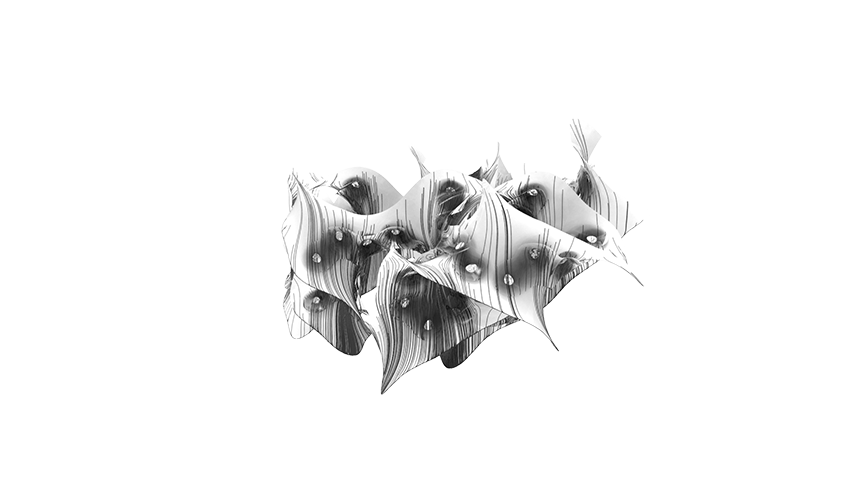
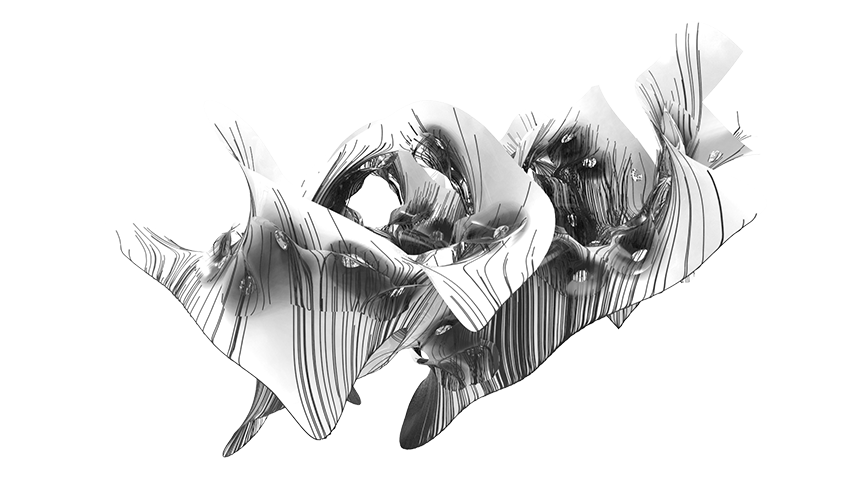
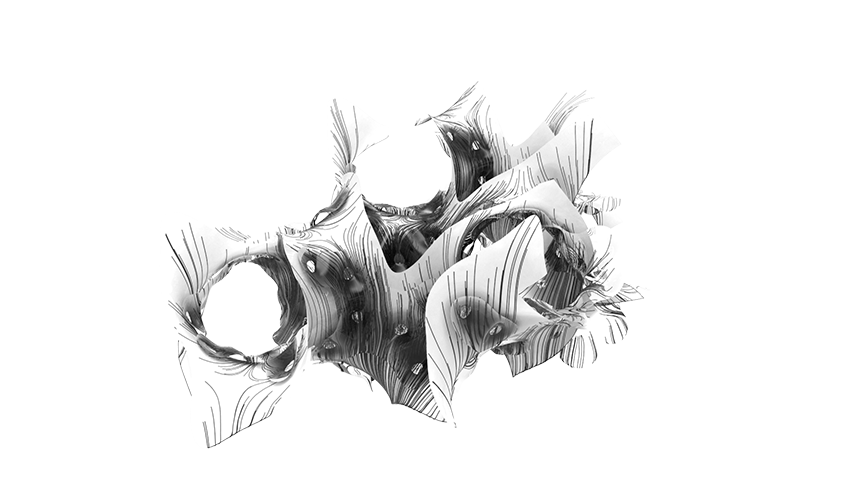
John Gulliford/Haresh Lalvani
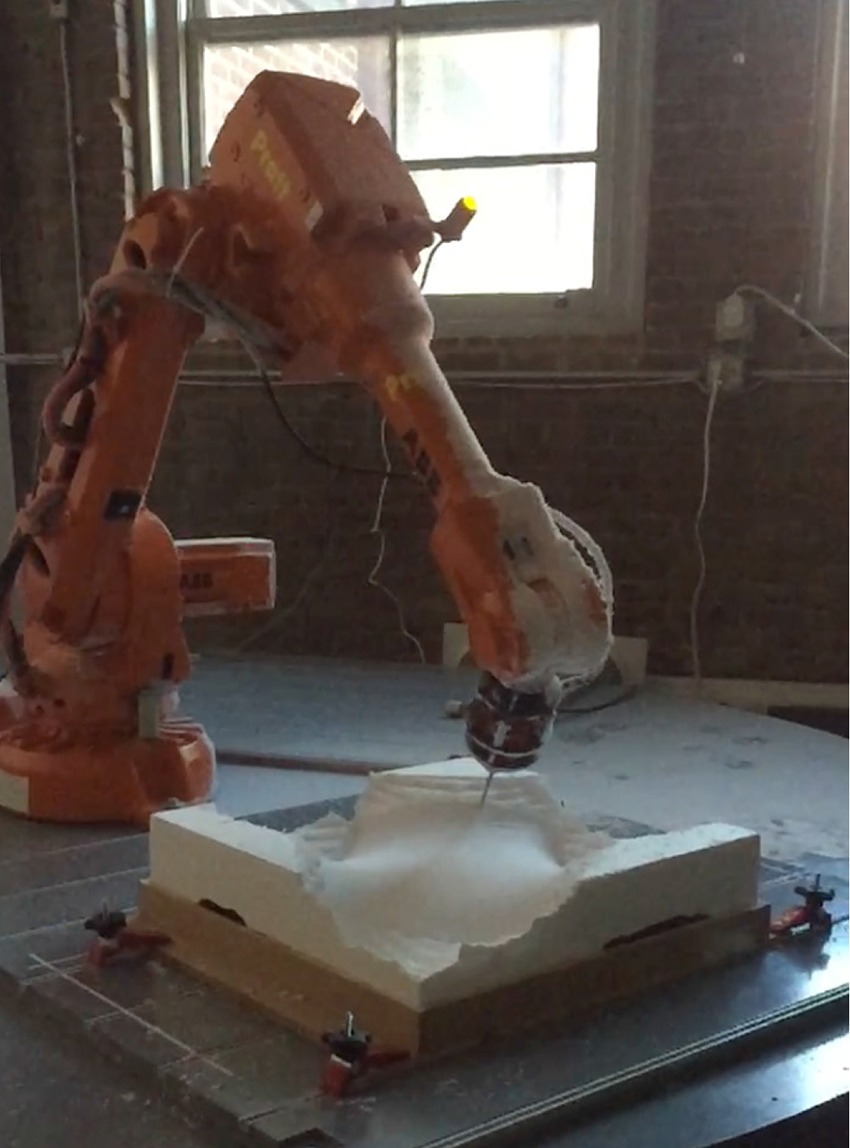
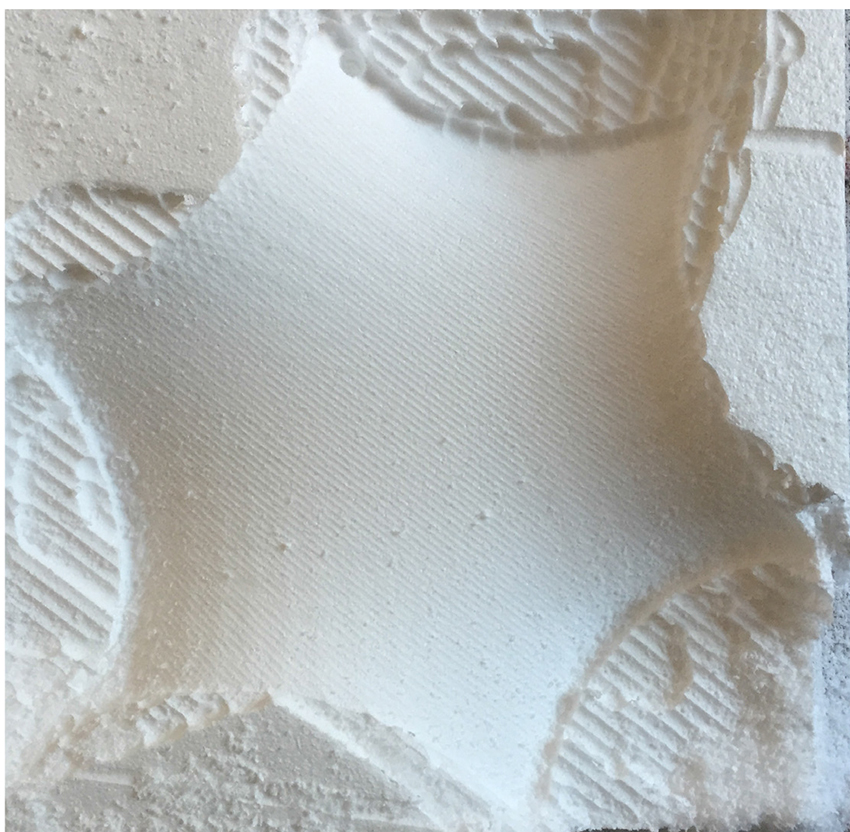
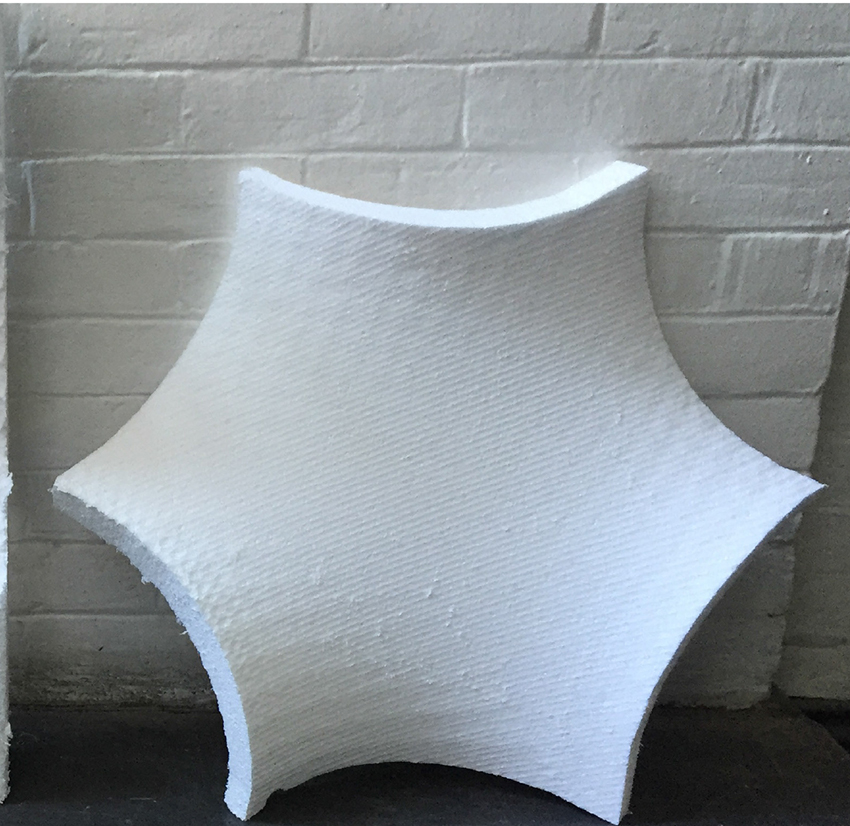
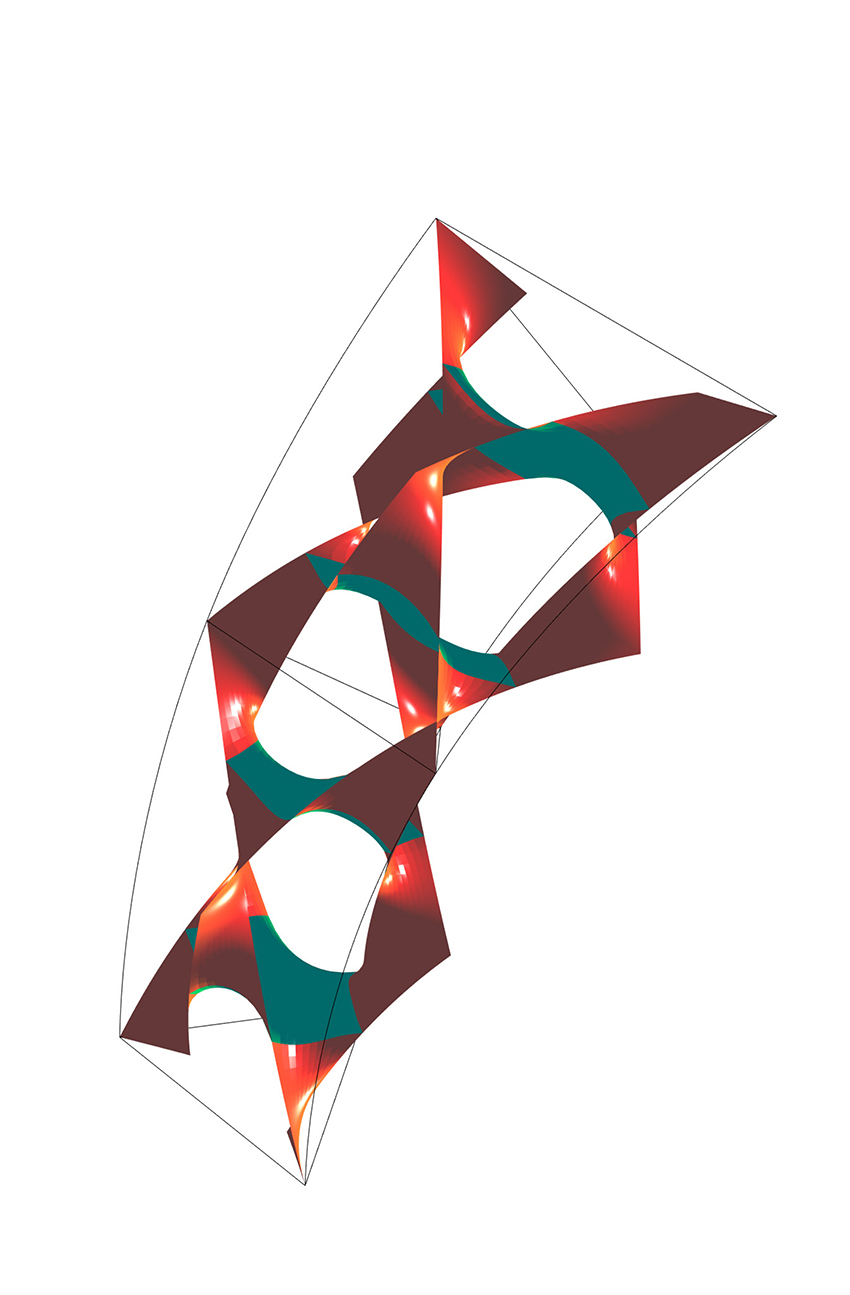
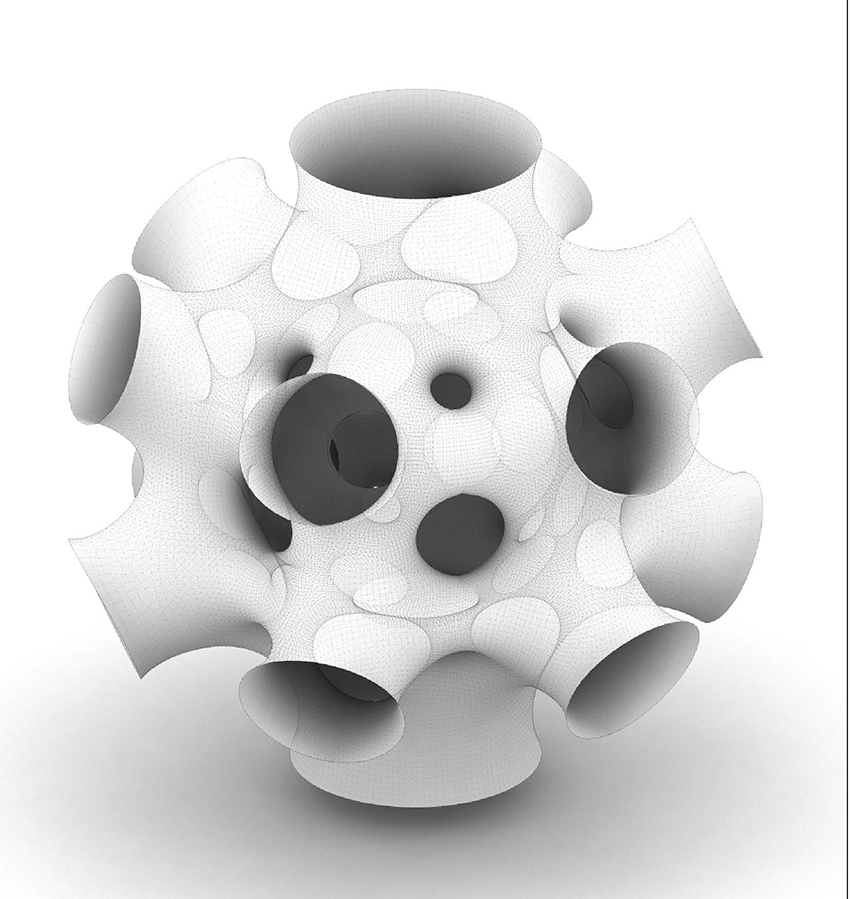
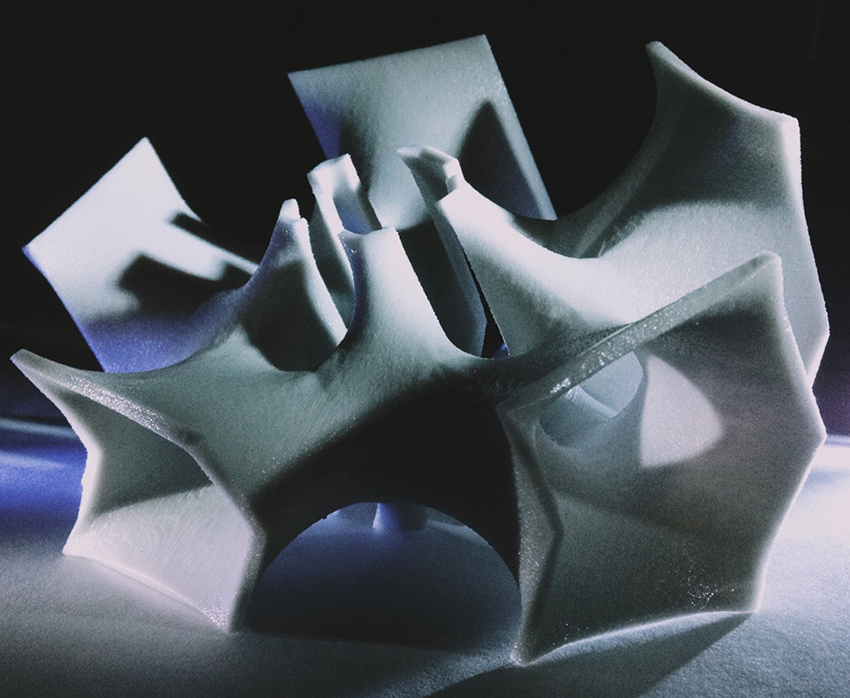
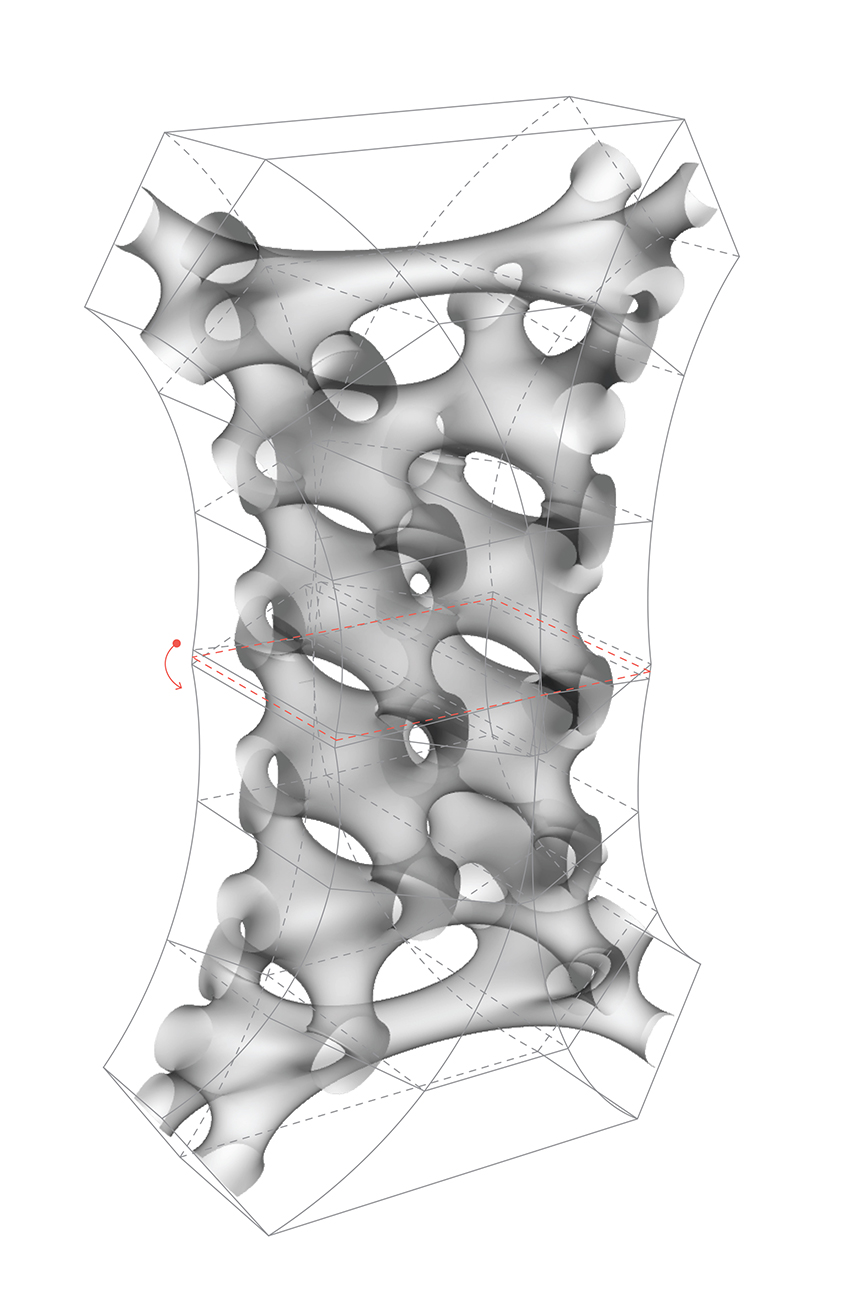
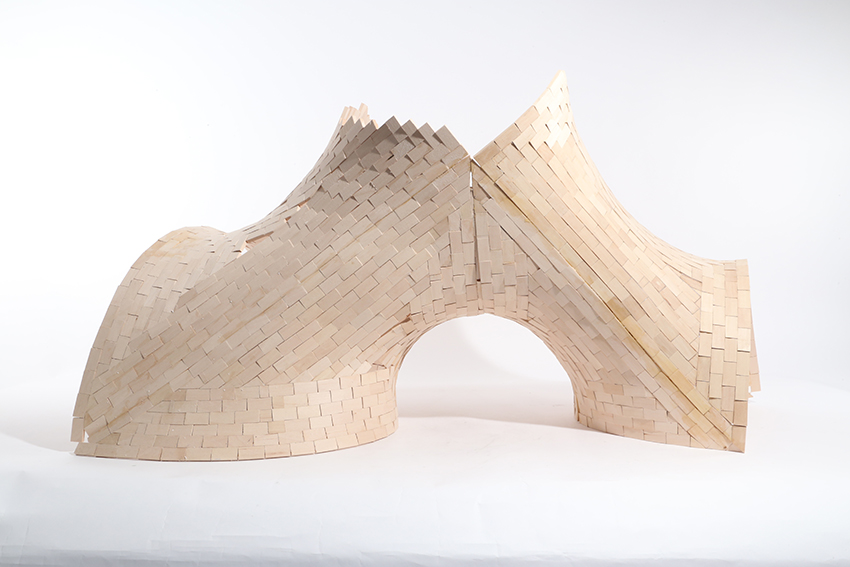
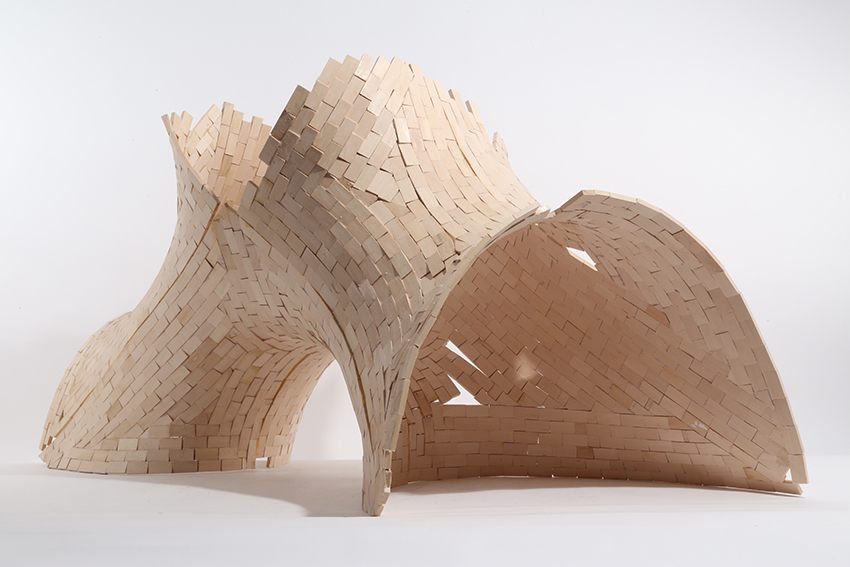
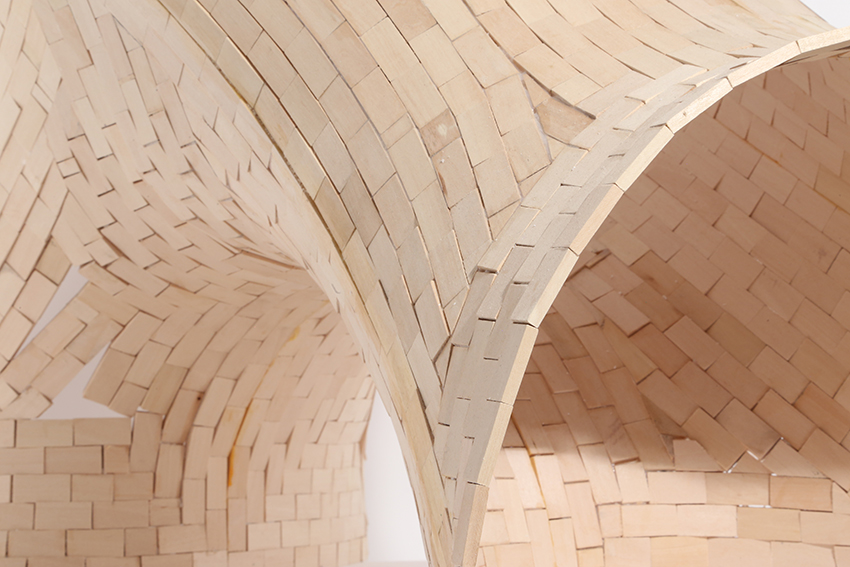
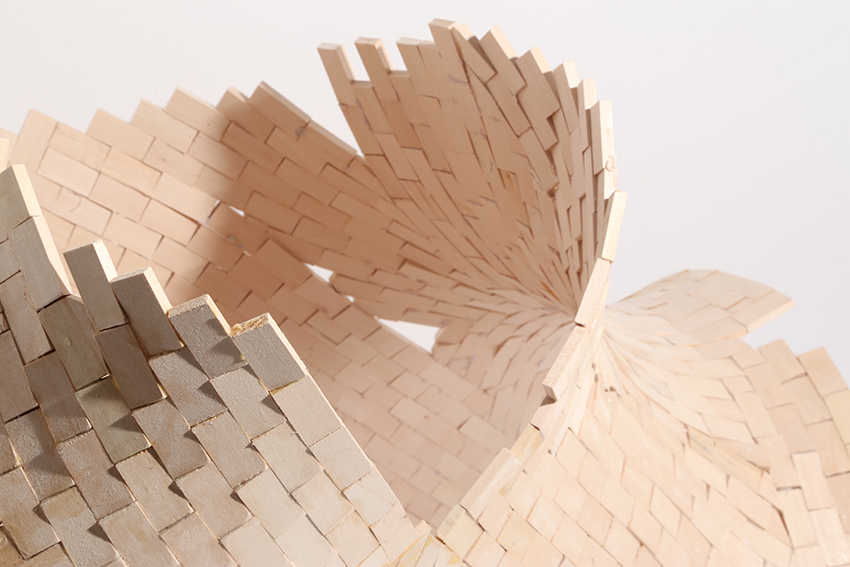
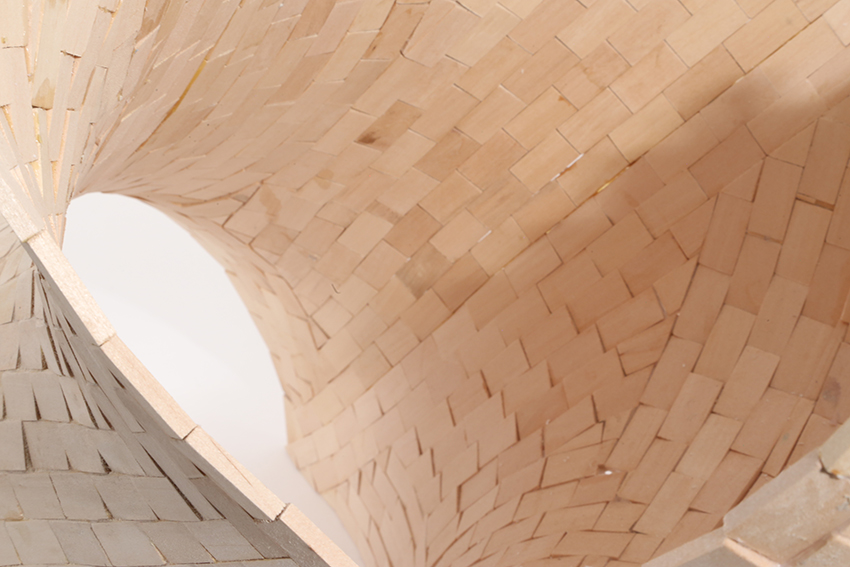
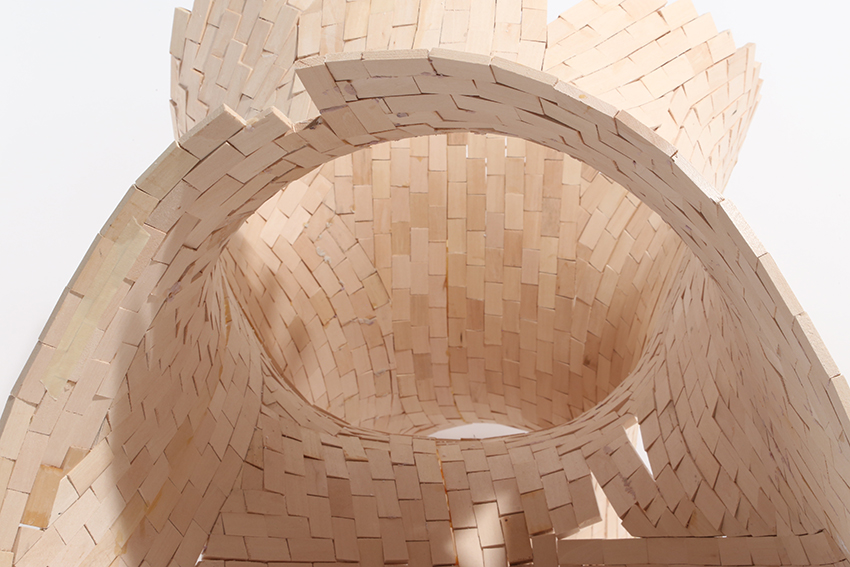
Patrick Donbeck/Haresh Lalvani
